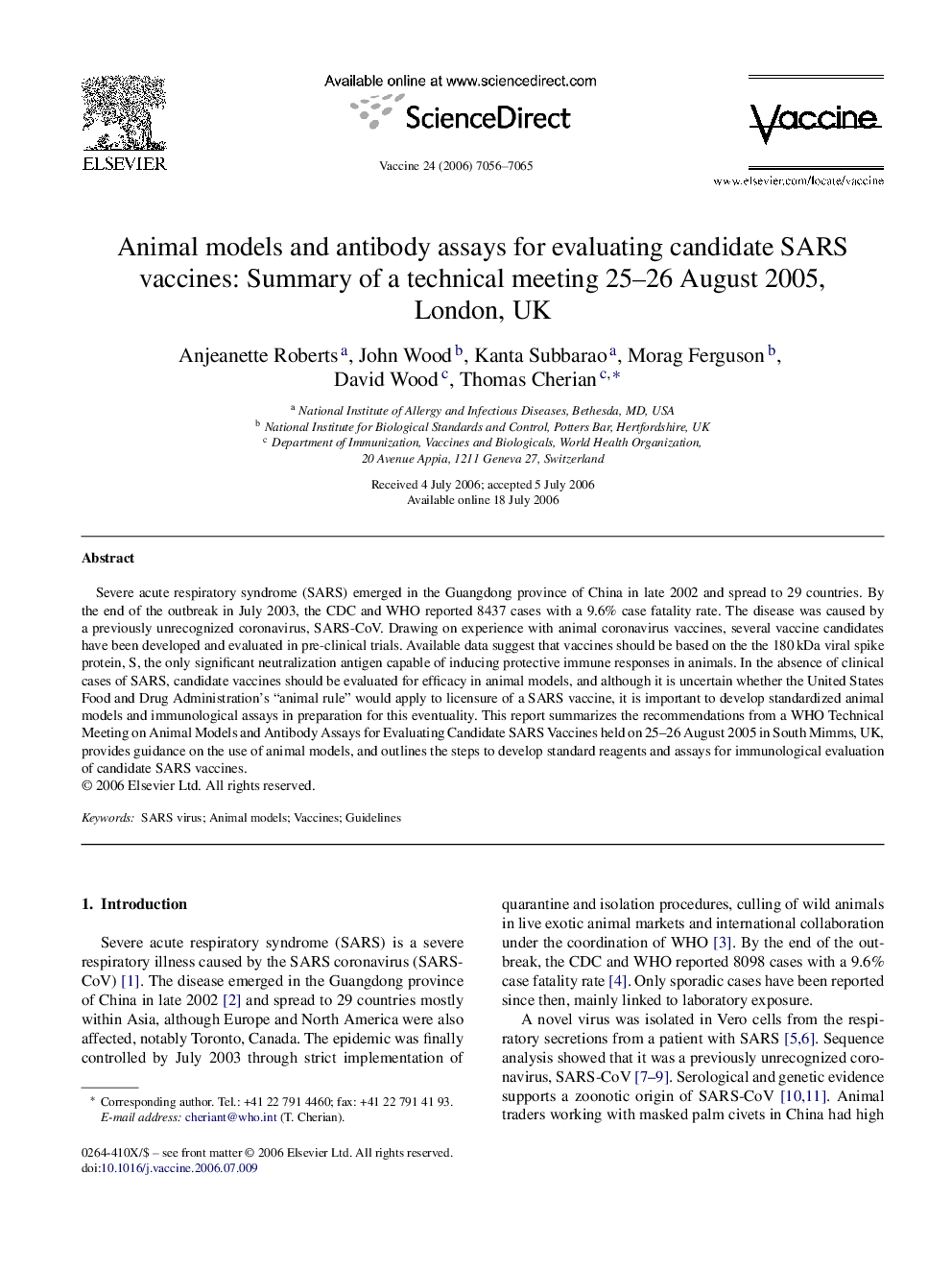| Article ID | Journal | Published Year | Pages | File Type |
|---|---|---|---|---|
| 2409110 | Vaccine | 2006 | 10 Pages |
Severe acute respiratory syndrome (SARS) emerged in the Guangdong province of China in late 2002 and spread to 29 countries. By the end of the outbreak in July 2003, the CDC and WHO reported 8437 cases with a 9.6% case fatality rate. The disease was caused by a previously unrecognized coronavirus, SARS-CoV. Drawing on experience with animal coronavirus vaccines, several vaccine candidates have been developed and evaluated in pre-clinical trials. Available data suggest that vaccines should be based on the the 180 kDa viral spike protein, S, the only significant neutralization antigen capable of inducing protective immune responses in animals. In the absence of clinical cases of SARS, candidate vaccines should be evaluated for efficacy in animal models, and although it is uncertain whether the United States Food and Drug Administration's “animal rule” would apply to licensure of a SARS vaccine, it is important to develop standardized animal models and immunological assays in preparation for this eventuality. This report summarizes the recommendations from a WHO Technical Meeting on Animal Models and Antibody Assays for Evaluating Candidate SARS Vaccines held on 25–26 August 2005 in South Mimms, UK, provides guidance on the use of animal models, and outlines the steps to develop standard reagents and assays for immunological evaluation of candidate SARS vaccines.
